Dominique Chicken
Personality:
Laying Eggs & Broodiness

|
Broodiness
in Hens
Eggs are
usually laid in the morning. The hens are somewhat broody. They are excellent
mothers, being very protective of their chicks. They are more tolerant of
other hen's chicks than most breeds of poultry. Sometimes several hens will
stay in a group and look after all of the chicks together.
Broodiness in poultry is influenced by the length of daylight with broody
behavior being strong in spring. You can increase broodiness in hens by
leaving eggs in the nest, rather than collecting all the eggs every day.
If you want the eggs, you can keep wood or plastic dummy eggs to encourage
them to set.
|
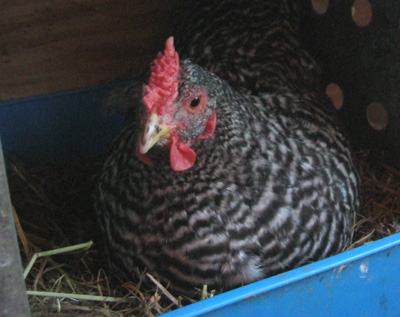 |
Setting
Hens
"I find
that, although not persistent sitters, if allowed to get broody the Dominiques
will handle a setting of eggs with more care than any breed of my acquaintance,
and after the chicks are hatched they will raise them better than any other
and will bring a larger percentage to maturity."
"The chicks, being very hardy, are easy to raise, and they feather so quickly
about the wings that their bodies are well protected in from two to three
weeks." -The Old Speckled Hen, A.Q. Carter, 1913
|
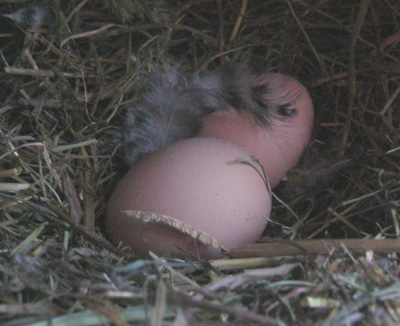 |
Egg Laying
and Molting Feathers
"After the
chicks were hatched the Dominique mother would start laying in from two
to three weeks and keep it up until the molt began, laying fairly well through
the first part of the molt."
"The Dominique starts the molt early, molts slowly, is never bare, does
not appear to weaken and lays throughout the greater part of the molting
period." -The Old Speckled Hen, A.Q. Carter, 1913
|
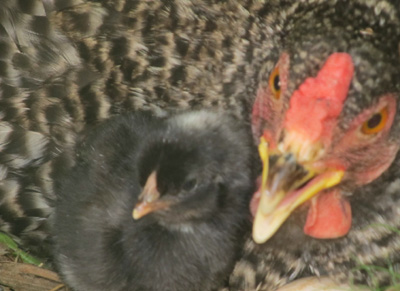 |
Family
Farms Love Broody Hens
Broodiness
is a valuable trait on a small, family or hobby farm. You can increase the
broodiness of your flock, by letting broody hens hatch eggs and then keeping
these chicks that carry the trait. It's fun to watch them with their babies.
Pullets are not as good as older hens at hatching eggs so it is better to
wait a year before having them sit on eggs.
This photo is a Dominique hen with the chick she hatched.
"I received my Dominique eggs in beautiful condition. I placed all 12 of them under my broody hen. This last weekend they all hatched out in great condition. I was so pleased with the obvious care you took in packaging and selecting the eggs." -Susan, Anderson, Indiana
|
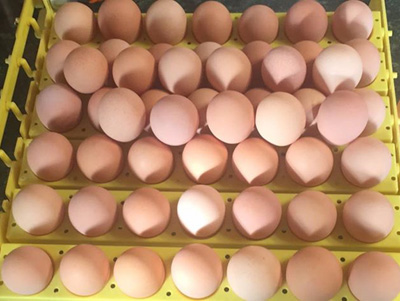
|
Dominique
Hens Lay a Lot of Eggs
"No breed
possesses better qualities as an all purpose fowl than the American Dominique.
Nor do the hens stop laying after a year or two of usefulness." -Dominique
Doings, 1914
This photo is Dominique eggs that Dolly and Richard in Mississippi received
from me.
"I've been very successful in the past on hatching my Production Reds (cross between Rhode Island Red and New Hampshire Red)...just wanted to switch to heritage breeds after reading how they have become endangered, and Dominique's seemed like a great fit on eggs/meat and foraging, just like my Production Reds." -Caroline, Kinta, Oklahoma
|
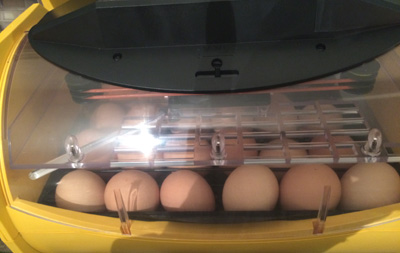
|
Shipped
Hatching Eggs
This photo
is fertile Dominique hatching eggs that I shipped. They are in a Brinsea Octagon 20 Eco incubator.
These eggs were shipped by me from North Carolina to Atlanta, Georgia. From there a man took them with him on a plane flight to Romania. They were even X-rayed when going through Customs. Out of 20 Dominique eggs, 15 hatched! An amazing hatch rate considering the long trip they went on.
|
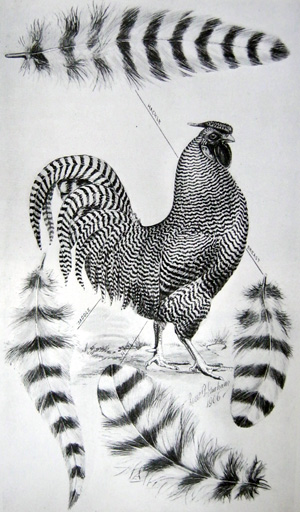
|
Male
American Dominique
"It is a fact
well established, that the medium-sized fowls afford the most eggs and flesh
for the amount of grain or food consumed. In this respect Dominiques have
no superiors as barnyard fowls. They are perfectly hardy, bright and active.
The plumage is at once beautiful, not only on near inspection, but at a
distance on the yard or lawn." -Illustrated Book of Poultry, 1855
This drawing is a male Dominique from "The Perfected Poultry of America"
book in 1907 by Thomas McGrew. The book was "a concise, illustrated
treatise of the breeds of poultry, turkeys, and water-fowl".
"Dominiques have a great consistency in their lay - in a nestbox, they are relatively friendly, and I have not had a bad experience with any Dominique roosters. They also handle our heat rather well." -Debra, Hico, Texas
|

|
Female
American Dominique
"She (Dominique
hen) is a good layer, is hardy, is not given to an undue amount of incubation
fever, and yet is an excellent mother and care-taker." -The Poultry World,
1884
"We know the value of these fowls, and so far as we are informed, would
prefer them today to any others. These are at least as docile as any fowls
we have ever owned." -Massachusetts Ploughman, August 1870
This drawing is a female Dominique from "The Perfected Poultry of America"
book in 1907.
|
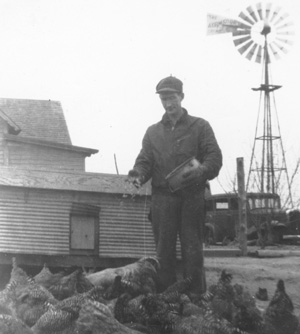
|
A Dominique
Pastoral
"Never the
word 'Dominique' falls on my ears but it conjures up images and recalls
old memories. It conjures up images of the hill farm in Chester County where
my mother was born. I see the old stone house, its white-washed walls dimming
in the November twilight but white enough to still afford relieve to the
shapes of fowls perched high up in the Sheldon pear tree. Dominiques, of
course!" -Cornelius Weygandt, Dominique Doings, 1914
This photo was taken around 1935.
|
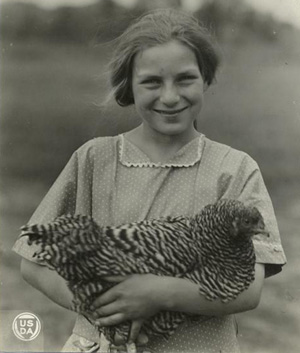
|
Beautiful
Blue-Gray Birds
"Dominique
conjures up, too, bright springs of boyhood when I made pilgrimages with
Uncle Pliny from Germantown to Yerke's for Dominique eggs. How wide the
Dominiques ranged that summer. All living their lives with zest and paying
their way with bonus on bonus to their admiring owner."
"Much as they delight me in the yard, however, they delight me more among
the sere weeds and ruddy grasses. The brown-red background brings out the
beauty of their blue-gray." -Cornelius Weygandt, Dominique Doings, 1914
This photo was taken sometime in the late 1800s. In the corner it says USDA.
|
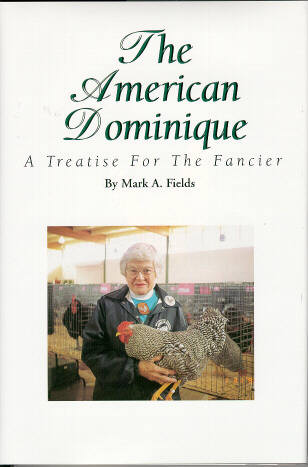 |
The American
Dominique
A book about
Dominique's was written by Mark A. Fields: "The
American Dominique: A Treatise for the Fancier". Only 550
were printed in 1997. It is out of print. However, it is available now as
an ebook. 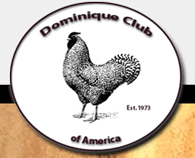
There also is a Dominque chicken group you can join Dominique
Club of America. It was founded in 1973. They work to preserve
both standard and bantam Dominiques. They encourage the breeding and showing
of this wonderful bird.
|
Buy Dominique Hatching Eggs
|
|








